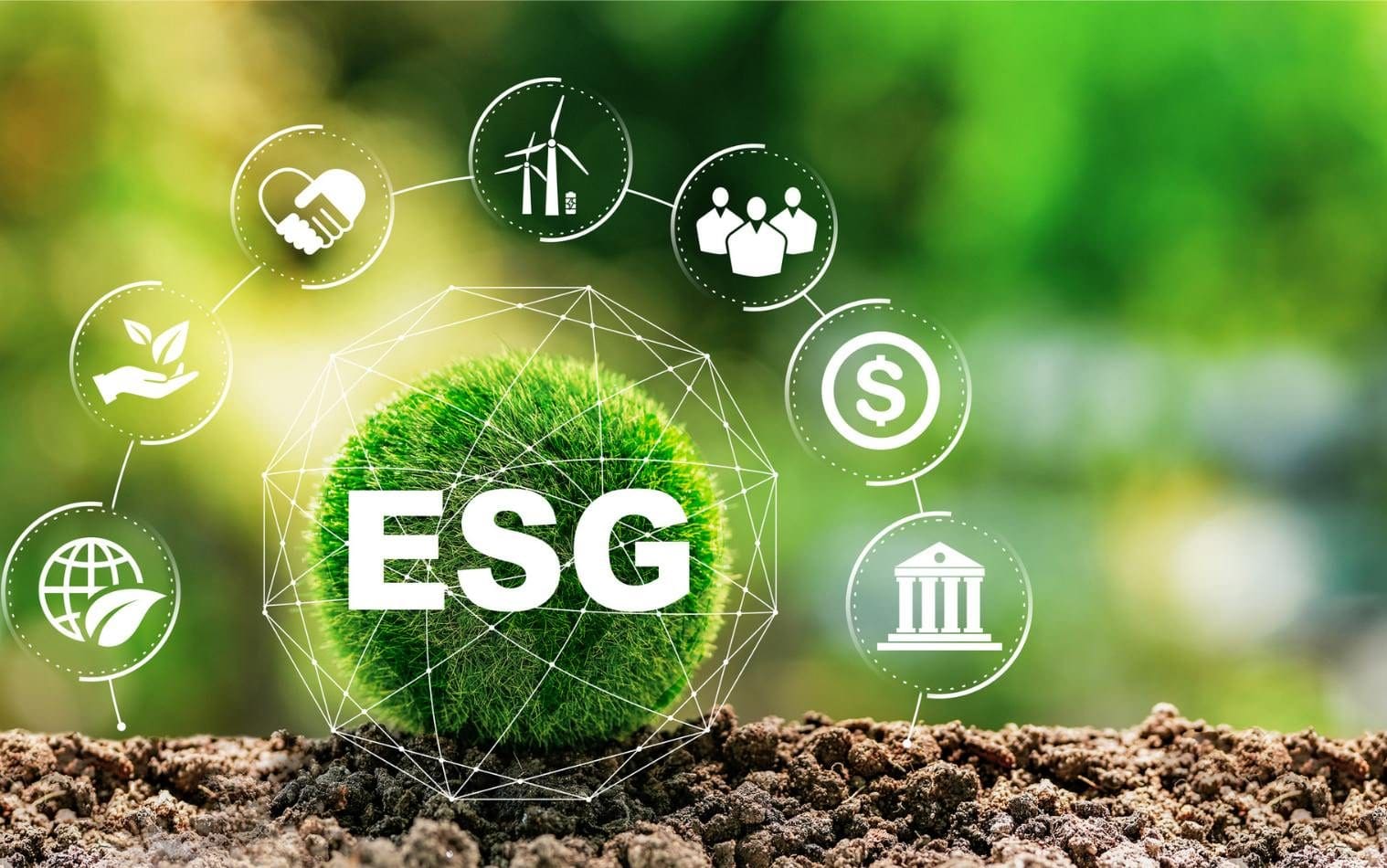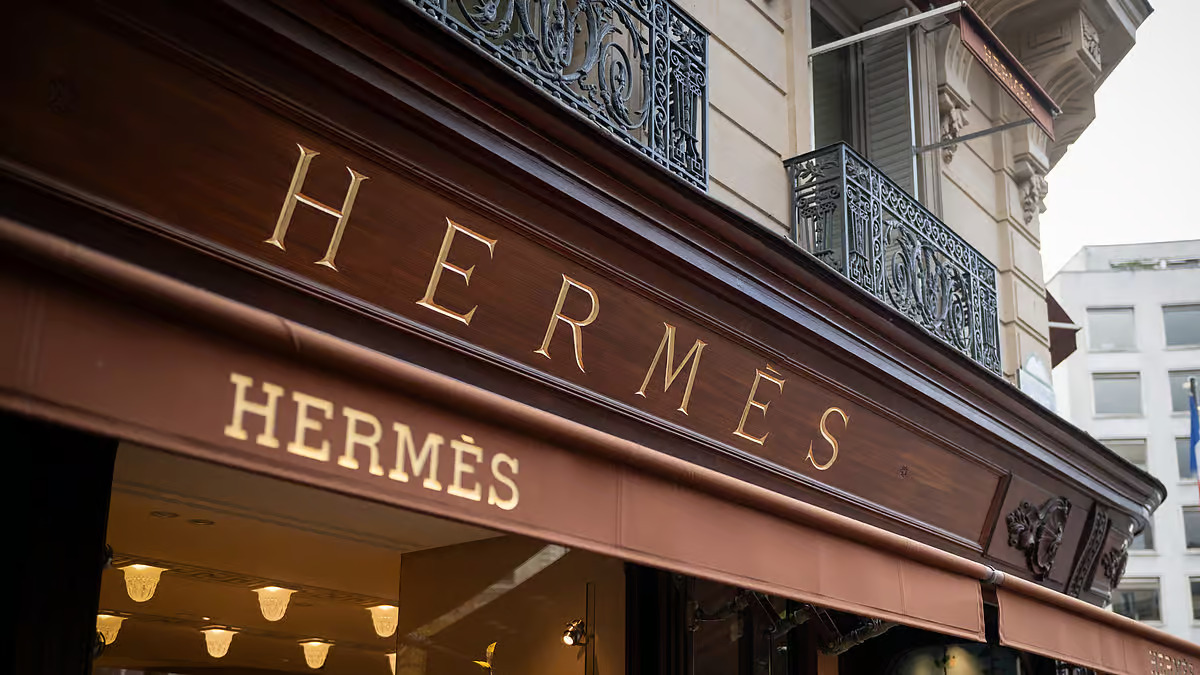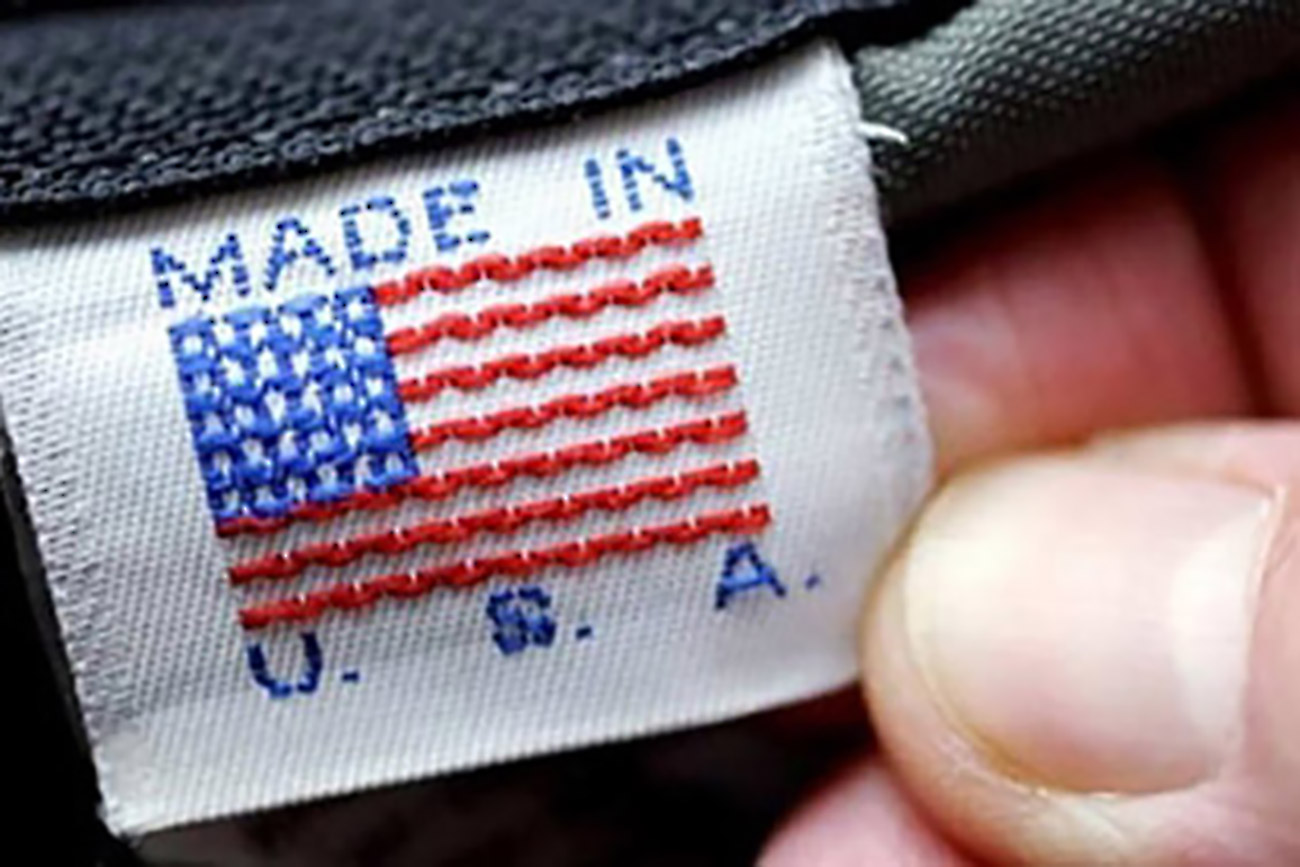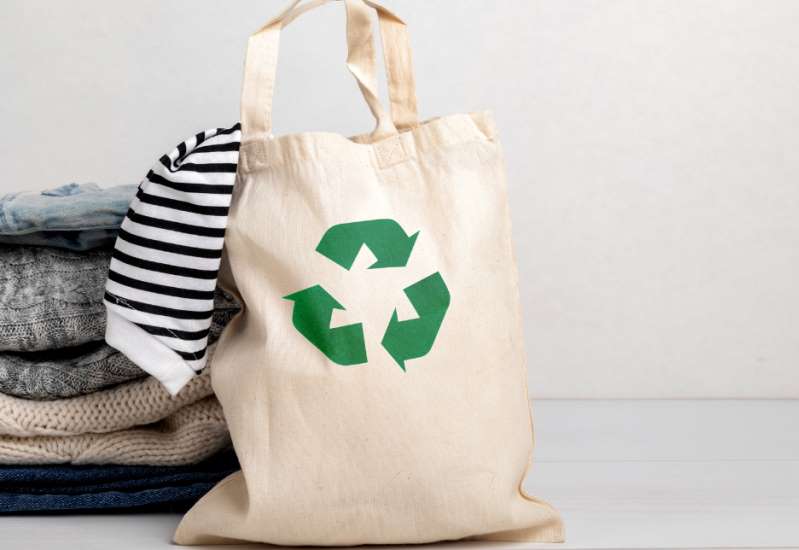FW

Cushman & Wakefield's (C&W) maiden ‘European Luxury Retail Report’ reveals a positive scenario of the industry, highlighting an increase in store openings and resilient consumer spending. However, a closer look the report reveals some potential shortcomings that could leave a more nuanced understanding of the market.
The report focuses on prime retail locations across 16 European cities. This narrow lens excludes the broader European luxury market, which encompasses smaller cities and online retail, a rapidly growing sector. Did luxury brands simply consolidate their presence in established strongholds, neglecting emerging markets? The report is silent on this.
Focus on openings, not overall health
The report boasts of an increase in new store openings on prime luxury streets. This might signal brand confidence, but it doesn't necessarily reflect the health of existing stores or the overall market. Questions emerge on: are these new flagships replacing closing locations elsewhere? Is there a trend of consolidation within the luxury sector? However, the report remains silent on these crucial aspects. The report highlights growth in fashion, footwear, and accessories, but doesn't explore potential brand homogenization. Are these prime locations becoming saturated with similar brands, diminishing the unique appeal of luxury retail?
The report claims luxury spending is nearing pre-pandemic levels, but it doesn't clarify if this is due to a genuine recovery or inflated prices. Are consumers truly spending more, or are they simply paying a premium due to factors like supply chain disruptions?
C&W highlights rising rents but neglects the potential impact on staff wages. Are luxury retailers keeping pace with rising rental costs by squeezing employee compensation? The report offers no clues.
Tourist dependence implicit
The report attributes some of the growth to returning tourists. While this is likely true, it doesn't account for potential future fluctuations in tourism. Geopolitical instability or economic downturns could significantly impact tourist spending, a factor the report doesn't fully address. Indeed, tourism undoubtedly plays a role, it's essential to understand the reliance on this factor. What about the domestic luxury consumer? Are European luxury brands successfully cultivating local clientele in an era of rising inflation and potential economic wobbles?
Silence on online retail's impact
The report seems to exist in a pre-e-commerce world. Luxury retail has a booming online presence. How are physical stores adapting to this omnichannel reality? Does the rise of online retail cannibalize sales in brick-and-mortar stores? The report offers no insights into this critical dynamic.
Also, the report celebrates brand expansion but remains silent on the environmental impact of this growth. Is the resurgence of luxury retail being pushed by sustainable practices, or is it business as usual? The report offers no insights.
While Cushman & Wakefield's report offers a glimpse into a seemingly resurgent European luxury retail market, it lacks a deeper analysis of potential vulnerabilities. A more critical approach that considers the impact of online retail, tourist dependence, and the overall health of existing stores would provide a more complete picture of this complex and ever-evolving market.
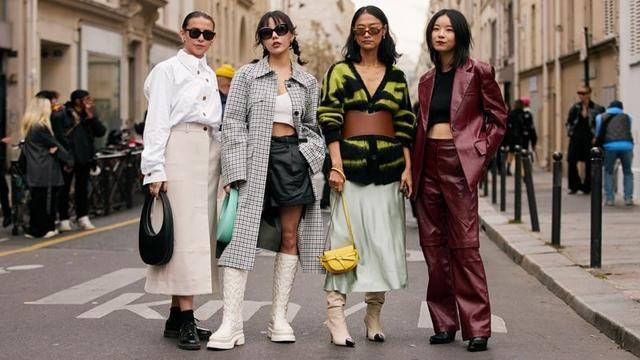
China's luxury market, once marked by conspicuous consumption and a booming economy, is undergoing a significant transformation. The current economic scenario, with slower growth and a focus on domestic brands, is reshaping consumer preferences and forcing international players to adapt.
Market resizes
The total market size of China's luxury market reached an estimated ¥4.7 trillion ($730 billion) in 2023 as per Bain & Company, reflecting a slight decline from the previous year. However, the annual CAGR remains positive, albeit at a slower pace. And McKinsey & Company predicts a CAGR of around 6-8 per cent for the next few years, compared to the double-digit growth witnessed in the past decade. This indicates a maturing market with a focus on quality and experience over mere brand logos.
International brands still dominant, but facing scrutiny
International luxury brands continue to hold a significant share of the Chinese market, accounting for roughly 70 per cent of total sales in 2023, reveals Jing Daily. However, their CAGR has mirrored the overall market slowdown, falling from double-digits to a projected 4-6 per cent in the coming years, as per Euromonitor International. This trend reflects a growing preference for experience and value among Chinese consumers, who are becoming more discerning. In fact, domestic brands like Huili (jewelry) and Anerdam (apparel) have captured a growing portion of the market.
Table 1: Market share of international vs. domestic brands (2018-2023)
|
Year |
International brands |
Domestic brands |
|
2018 |
85% |
15% |
|
2019 |
82% |
18% |
|
2020 |
78% |
22% |
|
2021 |
75% |
25% |
|
2022 |
72% |
28% |
|
2023 |
70% |
30% |
Shifting consumer behavior, beyond the logo
Luxury powerhouses like Louis Vuitton, Chanel, and Dior remain at the forefront, consistently ranking among the top sellers. Here's a glimpse at some leading brands and their estimated sales in China (¥ billion).
Table 2: Leading brands and sales
|
Brand |
Sales (2023 estimated) |
|
Louis Vuitton |
45 |
|
Chanel |
40 |
|
Dior |
38 |
|
Gucci |
35 |
|
Hermès |
32 |
These figures suggest a relatively stable market share for established brands. However, a new wave of domestic contenders like Shanghai Tang and Huishan Zhang are gaining traction, particularly among younger consumers seeking a unique cultural identity within the luxury space.
Chinese luxury consumers are evolving. Previously, brand logos and conspicuous consumption were the primary drivers. Now, factors like quality, craftsmanship, and brand storytelling are gaining importance. Today's savvy consumer seeks a personalized experience that aligns with their values. This shift is evident in the growing popularity of:
Sustainable practices: Consumers are becoming more environmentally conscious, demanding transparency and eco-friendly practices from luxury brands.
Cultural resonance: Brands that incorporate elements of Chinese heritage or collaborate with local artists are resonating strongly with consumers.
Experience over logo: Luxury is no longer just about the brand name. Experiences, storytelling, and brand values are gaining importance.
Digital savvy: Millennials and Gen Z are driving the rise of online luxury purchases influencing brands to invest heavily in e-commerce platforms.
Impact of an e-commerce boom
The emergence of e-commerce giants like Alibaba's Tmall Luxury and JD.com has revolutionized luxury retail in China. These platforms offer convenience, access to a wider range of products, and exclusive online offerings. However, challenges remain with counterfeits as online space is susceptible to counterfeiting, which can erode trust in authentic luxury brands. Return policies is also an issue especially for luxury brands as they are traditionally hesitant about lenient return policies, which can deter online purchases. Brands are investing in robust logistics and customer service infrastructure to address these concerns. Moreover, the digital environment doesn't fully replicate the personalized service and exclusivity associated with brick-and-mortar stores. Luxury brands need to adapt their storytelling to resonate effectively in the digital realm.
Brand strategies
Luxury brands are actively adopting strategies to overcome these challenges:
Omnichannel approach: Integrating online and offline experiences with features like virtual try-on and click-and-collect services.
Livestreaming: Engaging consumers through live product launches and influencer endorsements on streaming platforms.
Social commerce: Building communities on social media platforms like WeChat to foster brand loyalty and personalized experiences.
Enhanced logistics: Implementing robust return and authentication policies to build trust and encourage online purchases.
Sustainability efforts: Consumers are increasingly environmentally conscious. Luxury brands that prioritize sustainability gain a competitive edge.
China's luxury market is entering a new phase characterized by slower but more sustainable growth. Consumers are becoming more value-conscious, seeking meaningful experiences and brands that align with their evolving preferences. This presents both challenges and opportunities for international and domestic brands alike. By adapting to the changing landscape, embracing digital innovation, and prioritizing a customer-centric approach, luxury brands can navigate the shifting sands of the Chinese market and secure their place in this dynamic space.
Savio is set to unveil its latest innovations, the Proxima Smartconer automatic winder and the Lybra Smartspinner air-jet spinning machine, at the ITM 2024 exhibition in Istanbul from June 4th to 8th.
The Proxima Smartconer boasts advanced winding capabilities, emphasizing productivity and connectivity, while the Lybra Smartspinner offers versatile, cost-effective air-jet spinning solutions. Both machines will be showcased at the ITM 2024 exhibition in Istanbul, Turkey, highlighting Savio’s commitment to technological advancement in the textile industry.
By attending the ITM exhibition from June 04-08, 2024, Savio aims to demonstrate how its innovations can enhance competitive advantages for customers.
The Proxima Smartconer has been meticulously designed to meet customer needs, focusing on high productivity, low energy consumption, premium yarn quality, automation, and data connectivity. This investment in advanced equipment is intended to streamline operations, reduce manual labor, and increase overall productivity. The Proxima Smartconer excels in delivering faster, safer, and higher-quality output with less waste, maintenance, and resource consumption.
Savio’s new air-jet spinning machine, the Lybra Smartspinner, represents a significant leap in textile production. Developed with innovative spinning technology, the Lybra Smartspinner caters to specific applications such as knitting, home textiles, and sunshades. Air-jet spun yarn, known for its soft and smooth texture, is ideal for creating both functional and fashionable fabrics.
The Lybra Smartspinner is designed to be versatile, flexible, cost-saving, and user-friendly. It enables yarn manufacturers to achieve high production rates and low processing costs. Unlike conventional ring spinning, air-jet spinning uses slivers directly, integrating roving, spinning, and winding into a single process. This approach reduces space requirements by 25 per cent-30 per cent compared to ring-spinning equipment of the same capacity, leading to lower building costs.
Additionally, the reduced space needs less climate control and fewer operating personnel, resulting in significant savings and maximising return on investment.
Savio's participation in ITM 2024 underscores its dedication to advancing textile technology and supporting its customers with innovative, efficient, and cost-effective solutions.
Showcasing its dedication to sustainability, Eastman unveiled the Naia Renew ES staple fibers at the Intertextile Shanghai Apparel Fabrics Spring exhibition in March. This innovative fiber marks Eastman’s latest contribution to sustainable textiles.
The man-made cellulosic fiber is available with 60 per cent certified recycled content on a large scale, says Carolina Sister Cohn, Head-Global Marketing, Eastman Textiles. The company aims to collaborate with sustainability-driven fashion brands to foster significant changes within the industry, she adds.
Eastman's exhibit featured over 400 fabric and garment types made with Naia Renew staple fibers, highlighting the incorporation of recycled waste material through Eastman’s molecular recycling. The diverse garments displayed the adaptability of sustainable textiles made with Naia and underscored Eastman's extensive influence on the fashion sector.
Students from the Beijing Institute of Fashion Technology contributed to the exhibition by designing garments with Naia fabrics, emphasising the importance of inspiring the next generation towards sustainable fashion and promoting innovation and environmental responsibility.
Naia Renew ES is made from 60 per cent recycled* waste and 40 per cent sustainably sourced wood pulp, certified by the Global Recycled Standard (GRS). This innovative process not only reduces the reliance on virgin materials but also tackles the pressing issues of waste and environmental degradation.
Eastman's molecular recycling technology is pivotal in this process, transforming hard-to-recycle mixed waste into new materials that match the quality of nonrecycled counterparts. Naia Renew earned GRS certification in December 2023, reaffirming Eastman's commitment to sustainable practices and their environmental and social responsibilities.
A Brazilian multinational company specialising in denim manufacturing with operations across Latin America, Europe, and Asia, the Vicunha Group has inaugurated a new sewage treatment plant that generates reusable water for its industrial processes.
Vicunha Services, a subsidiary focused on environmental services, has launched the VSA project. This Industrial Effluent Treatment and Reuse Water Production Plant is designed to serve industries in Ceará, a state located in Northeast Brazil, where Vicunha is based. The project represents an investment of approximately $12 million, a cost shared by Vicunha and Cagece, the State Water and Sewage Company of Ceará.
Beyond treating industrial effluent, the project also reuses water from treated domestic households in the cities surrounding the industrial zone. This initiative is a pioneering effort in Brazil, aiming to significantly reduce the demand for raw water from the region's natural sources.
Vicunha is committed to the UN Global Compact and, in 2020, pledged support for SDG 6: Clean Water and Sanitation. By 2030, the company aims to enhance water use efficiency by reducing water consumption in its manufacturing operations and eliminating the use of surface water sources in Ceará. Over the past two years, the company's initiatives have already saved more than 160 million liters of water annually.
The initiative exemplifies how a public-private partnership can advance sustainability, protect the environment, and promote the economic development of the region while enhancing the well-being of the population, says Neuri Freitas, CEO, Cagece.
The VSA Project employs complex filtering and treatment processes that combine biological and physicochemical methods. This enables a significant reduction—up to 90 per cent—in the industry's reliance on water drawn from natural sources, thereby contributing to the preservation of water sources and rivers.
In addition to socio-environmental benefits, the VSA project will also foster economic development in the region by allowing other local companies to participate in the system and enjoy similar benefits.
Zegna, the esteemed Italian company founded by Ermenegildo Zegna has unveiled the first chapter of Villa Zegna in Shanghai.
This project aims to provide consumers and industry insiders with an immersive experience reflecting the beauty and uniqueness of Oasi Zegna’s 100 sq km of natural territory in Piedmont, Northern Italy, where the company is based. The one-week event offers unprecedented insight into the vision of Ermenegildo Zegna, who, in the 1930s, planted over half a million trees and constructed a panoramic road connecting the two sides of the mountainous landscape near Biella, now home to Oasi Zegna.
This manifesto emphasises that Oasi Zegna, as a mindset, is expanding globally. Serving as the foundation of Zegna’s values, Oasi Zegna is a unique model of social and environmental awareness that has guided the brand for over a century. Inspired by this vision, ‘Villa Zegna’ was conceived as a global concept set to travel to various markets, sharing the brand’s story uniquely and adding new dimensions with each chapter.
Debuting in Shanghai, in the vibrant Middle Huaihai Road neighborhood, the installation recreates a real oasis of linen, inspired by the Spring/Summer 2024 collection show set. ‘Villa Zegna’ will be a one-week event, welcoming guests by invitation only, offering an experience that transcends mere product display.
Spanning three floors, the installation seamlessly integrates the founder’s vision, the brand’s history, and the fabrics that have made Zegna the leading menswear brand in the world. Guests embark on a journey through the linen oasis before arriving at the apparel collection floor. This natural sanctuary within the metropolis celebrates Oasi Lino, Zegna's fully traceable fiber and fabric, pivotal in the brand’s summer collections since 2024.
The top floor features a dedicated space transformed into an exclusive, relaxing private lounge. Here, select clients can enjoy a tailor-made shopping session with exclusive products unavailable in the usual retail network. This personalised approach offers the premium community an opportunity to immerse themselves in top luxury.
Following the inauguration of the first Zegna Caffè worldwide in Shanghai’s Taikoo Hui, a Zegna Caffè pop-up will be available for guests to enjoy a moment of relaxation.
The world’s largest manufacturer of home textile bed linens, Indo Count has entered into a licensing agreement with Iconix International Inc to manufacture Fieldcrest and Waverly branded products in the US and Canada. This strategic move enhances Indo Count’s presence in the US market following their successful acquisition of Wamsutta.
The new licensing agreement encompasses a broad range of product categories, including sheets, fashion and utility bedding, bath, and window treatments. This expansion significantly bolsters Indo Count’s brand portfolio, enabling them to better serve diverse consumer segments in the US and Canada.
This partnership aligns perfectly with the company’s commitment to deliver exceptional home textile products that meet the diverse needs of consumers, says Mohit Jain, Executive Vice Chairman, Indo Count.
Fieldcrest, established in 1893, has a long history of offering bedding and bath products originating from the textile mills of North Carolina. Waverly, founded in 1923 by F. Schumacher & Co., has been a leader in prints and patterns, becoming synonymous with personal curation in home fashion.
The broad demographic appeal of Fieldcrest and Waverly allows Indo Count to effectively target various consumer segments, enhancing market penetration. These partnerships also reinforce Indo Count’s commitment to expanding its value-added business, positioning the company for sustained growth in the global market.
The enriched brand portfolio from these agreements enables Indo Count to offer a wider variety of high-quality, stylish home textile products. This move also marks a significant step in their efforts to expand their B2C footprint in the US and Canada, making their products more accessible to North American consumers.
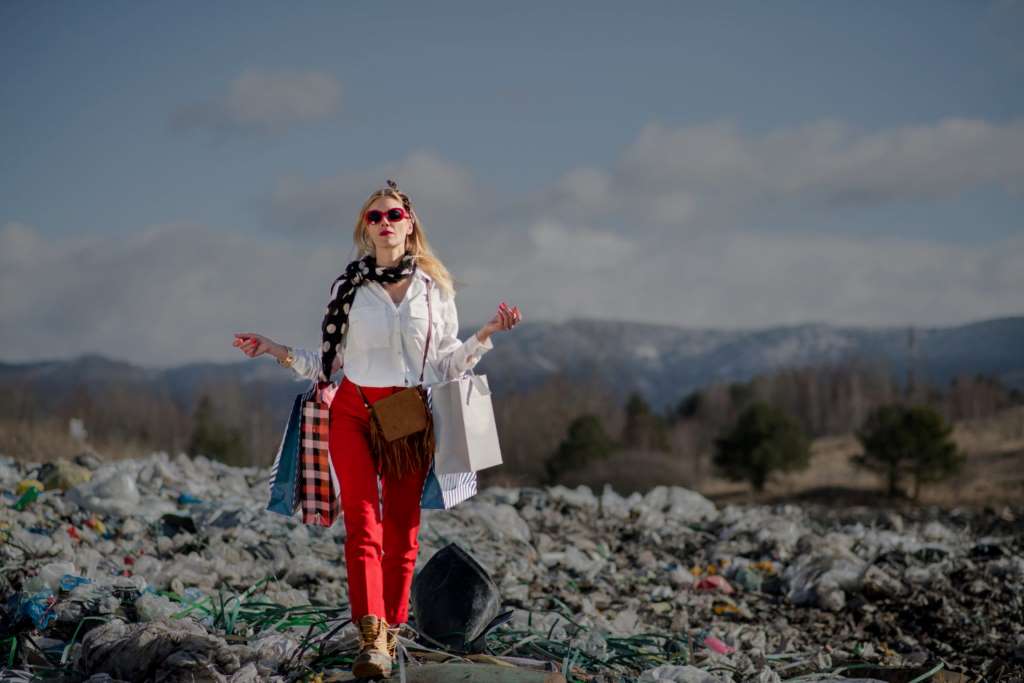
The fashion industry is in a whirlwind. Fast fashion, with its trendy clothes at rock-bottom prices, continues to dominate the market, projected to reach a staggering $291.1 billion by 2032 at a CAGR of 10.7 per cent. However, a growing shadow looms – the environmental cost of this relentless trend.
The market is segmented by various factors, with the adult segment leading the pack in terms of growth, followed by males as the dominant gender category. Independent retailers currently hold a significant share, but online stores and brand stores are catching up rapidly. Interestingly, Asia-Pacific is projected to be the fastest growing region in this market.
Enter Ultra-Fast Fashion: A new level of speed
Ultra-fast fashion takes the concept of fast fashion to an extreme. Brands like Shein churn out thousands of new designs per day, capitalizing on fleeting trends and impulsive buying habits. This model disrupts traditional retail by offering incredible speed and flexibility. However, the environmental impact is a major concern. The industry is accused of excessive water usage, chemical pollution, and textile waste.
In fact, fast fashion, with collections renewed a few times a year, already faces criticism for its environmental impact. But the new breed of ultra-fast fashion takes it to a whole new level. Shein for example, churns out thousands of new designs daily, fueled by a data-driven, ultra-flexible supply chain. This allows it to capitalize on fleeting trends and impulsive buying, but at a tremendous environmental cost.
Several factors fuel the growth of both fast fashion and ultra-fast fashion. Affordability is top most as fast fashion caters to a desire for trendy clothing without breaking the bank. This is particularly attractive to younger demographics like millennials and Gen Z. Novelty is another allure. The constant influx of new designs feeds the need for variety and keeps consumers engaged. Then online platforms and widespread retail chains make fast fashion readily available. Strategic partnerships with celebrities and influencers create a sense of urgency and exclusivity, driving impulsive purchases.
Some facts about global fast fashion are that the market is segmented by gender, with the male segment expected to maintain the lead. The market is divided into adults, teens, and kids, with adults currently driving the most growth. Independent retailers, online stores, and brand stores. Online stores and brand stores hold a combined market share of around 35 per cent. In terms of geography, North America currently holds the largest market share, but Asia-Pacific is expected to see the fastest growth in the coming years.
This model of excessive consumption exacerbates the environmental issues of fast fashion, leading to proposals like penalties. For example, the French government is considering penalties of up to 50 per cent of a garment's price to offset the environmental impact of ultra-fast fashion companies. France is also proposing bans on advertising by ultra-fast fashion companies.
Slow fashion’s new allure
In response to these concerns, a movement for slow fashion is gaining momentum. Slow fashion emphasizes ethical production, sustainable materials, and quality over quantity. This approach aims to reduce the environmental footprint of the fashion industry. No wonder, consumers are increasingly looking for slow fashion, which prioritizes ethical production, quality materials, and timeless styles.
Can fast fashion be sustainable?
The answer is a maybe. Some fast fashion companies are incorporating sustainable practices like:
Eco-friendly materials: Using recycled fabrics or organic cotton can lessen environmental impact.
Ethical labor: Ensuring fair wages and safe working conditions for garment workers.
Waste reduction: Initiatives to minimize fabric waste during production and encourage garment recycling.
However, the core business model of fast fashion – rapid production and low prices – inherently clashes with true sustainability.
The long-term outlook is a balancing act
The future of fashion lies in finding a balance. Consumers can make conscious choices, opting for sustainable brands and buying less, but more durable, clothing. Regulations like those proposed in France, aiming to penalize ultra-fast fashion brands, could incentivize a shift towards sustainability. Businesses need to innovate and adopt eco-friendly practices throughout their production cycles. Ultimately, a collaborative effort from consumers, policymakers, and the fashion industry is crucial to ensure a future where style meets sustainability.
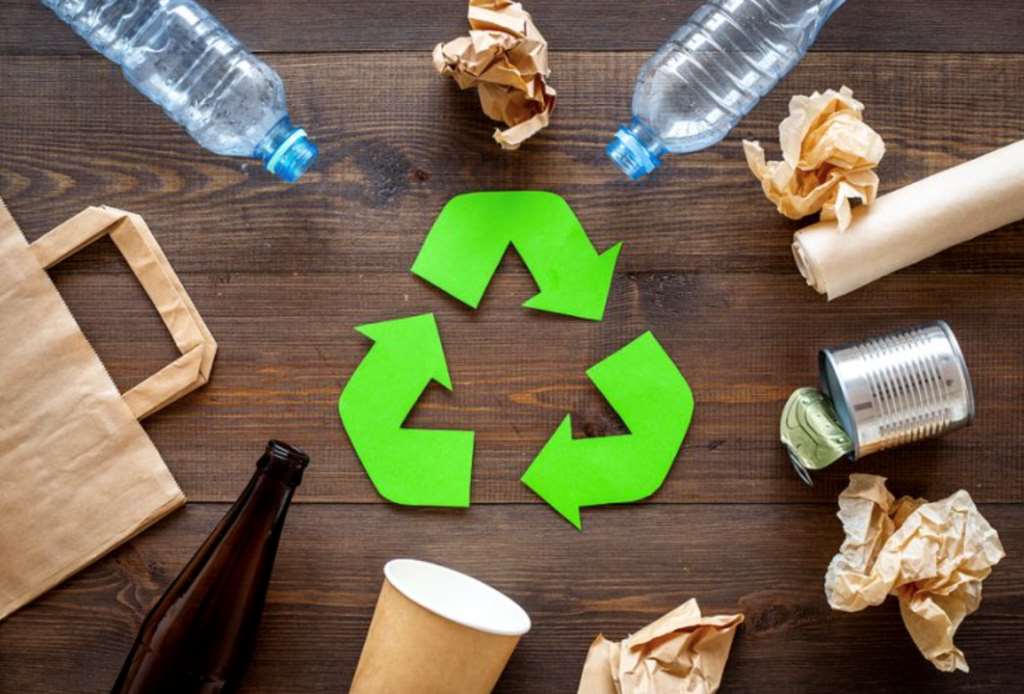
rPET fibers, Patagonia, The North Face, Adidas, H&M, Mordor Intelligence
Recycled polyester fiber (rPET), reborn from plastic waste, is rapidly transforming the textile industry. This eco-friendly alternative to virgin polyester offers a glimpse into a more sustainable future for fashion and beyond.
The global rPET fiber market is booming. In 2021, it stood at $12.3 billion, and is expected to reach a value of $28.3 billion by 2031, with a healthy CAGR of 8.71 per cent. This growth is due to several factors viz rising consumer demand for sustainable products and growing environmental concerns.
Production and consumption trends
A look at the statistics reveals, polyester itself accounts for over half of the global fiber market, with a significant portion shifting towards recycled options. This trend is evident in rising rPET demand, with projections expecting a capture rate of at least 45 per cent by 2025 and a long-term vision of reaching 90 per cent by 2030.
Table: Global rPET fiber market
|
Category |
Value |
Source |
|
|
Market Size (2021) |
$12.3 billion |
Industry Report |
|
|
Projected Market Size (2031) |
$28.3 Billion |
Industry Report |
|
|
CAGR (2021-2031) |
8.71% |
Industry Report |
|
|
Polyester Share of Global Fiber Market |
Over 50% |
Industry Report |
|
|
Projected rPET Capture Rate (2025) |
At least 45% |
Industry Report |
|
|
Long-Term rPET Capture Vision (2030) |
90% |
Industry Report |
Asia Pacific dominates the rPET fiber production landscape, with China being a major player. Brands like Patagonia and The North Face, with a significant presence in Asia, are driving the demand for rPET in the region. However, the story on the consumption side differs. Europe and North America are currently leading the charge in rPET fiber usage, driven by strong consumer awareness and government regulations promoting sustainability. Brands like Adidas and H&M, headquartered in Europe, have pledged to increase their use of rPET in their products.
Table: rPET Fiber Production and Consumption
|
Region |
Production Leader |
Consumption Leader |
Reason for Consumption Lead |
|
Asia Pacific |
China |
Europe & North America |
Strong consumer awareness and government regulations |
|
Examples (Brands) |
Adidas, H&M |
European Headquarters |
While rPET fiber production is ramping up, it still lags behind consumption. Data suggests that in 2022, only around 14 per cent of the global fashion industry's polyester demand was met by recycled fibers as per Mordor Intelligence. This gap presents a tremendous opportunity for increased production and infrastructure development. "Recycled polyester fiber is a game-changer for the textile industry. It allows us to create high-quality products while minimizing our environmental footprint," explains Stella McCartney, renowned fashion designer known for her sustainable practices.
Several brands are taking concrete steps to integrate rPET into their products. Patagonia, a renowned outdoor apparel company, has pledged to eliminate virgin polyester by 2025, relying heavily on rPET for its clothing lines. Similarly, Adidas, a sportswear giant, aims to use recycled polyester in all its products by 2024. These examples showcase the industry's growing commitment to sustainability. “Recycled polyester is a game-changer for the textile industry. It allows us to create high-performance products while minimizing our environmental impact," explains Yvon Chouinard, Founder of Patagonia.
Despite the positive outlook, the rPET market faces hurdles. Collection and sorting of plastic waste for recycling remain inefficient, especially in developing countries. Additionally, scaling up production of high-quality rPET fibers to meet rising demand requires technological advancements. To overcome these obstacles, strategic initiatives are underway. Investments in improved waste management infrastructure and technological advancements in recycling processes are crucial. Furthermore, promoting a ‘circular economy’ where used textiles are recycled back into new fibers is another key solution.
Indeed, rPET fiber market is promising, driven by environmental concerns and consumer preferences. While challenges exist, innovative solutions and industry collaboration are paving the way for a more sustainable future. As production capacities increase, costs decrease, and infrastructure improves, rPET has the potential to revolutionize the textile industry, leaving a smaller footprint on our planet.
At the Global Fashion Summit, RE&UP introduced a recycling ecosystem poised to revolutionize the textile industry. Building on Sanko's century-old textile heritage, RE&UP has developed a patented technology capable of separating polycotton blends into pure cotton and polyester, making significant strides in sustainable fashion.
This innovative process combines advanced thermochemical, thermomechanical, and mechanical technologies, allowing it to recycle various feedstocks and expand accessible waste streams.
The resulting Next-Gen Cotton and Next-Gen Polyester match the performance of virgin materials, boasting robust fiber length and full decolorization while cutting water usage and carbon dioxide emissions by approximately 85 per cent.
RE&UP's technology is ready for immediate application in yarns, fabrics, and garments, operating from its facilities in Turkiye, with plans to expand across Europe and Asia. The company aims to recycle over 200,000 tons of textile waste annually by 2025 and scale up to over one million tons globally by 2030.
RE&UP is committed to promoting a more responsible and technologically advanced future for textiles and fashion, according to Chairman Fatih Konukoglu.
At the summit, RE&UP will participate in discussions on future fibers and global collaboration, emphasizing their commitment to driving sustainable change in the fashion industry.

